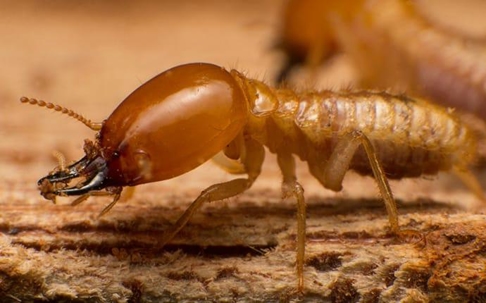Termites are a pest that everyone knows about, but few people think about it. However, every Bay Area homeowner should give serious thought to termites. These wood-destroying insects can damage your home beyond repair right under your nose. If you've never given termites more than a passing thought, you need The Bay Area's complete guide to effective termite control.
What Are Termites?
Termites are small insects that live in a caste system consisting of kings and queens, reproductives, soldiers, and workers. All but the reproductive members of the colony remain out of sight most of their lives, either living in the soil underground or within the wooden structures that they eat. Reproductive termites come out in the open when it is time to mate. They are often mistaken for ants because of their similar appearance.
Because termites rarely come out from underground or from within the wooden structures they inhabit, most Bay Area homeowners don't realize that they have a termite infestation in their home until the damage to their house has become extensive.
Why Is Early Detection Of A Termite Infestation So Important?
The main food source for termites is wood. Once termites enter your home, they'll start eating through the wooden structures inside, including the ones that are holding your house up. Although a small colony might take a long time to cause serious damage, termite colonies grow quickly.
Termite colonies with members in the hundreds of thousands are not at all unusual. If the colony in your house is left alone, it can grow to this size, and when there are that many termites in your home, they will make quick work of destroying the wooden structures in your house.
Early detection of a termite infestation is vitally important to protect your home's structural integrity. The longer a termite colony is allowed to remain, the more damage it will do.
What Are The Signs Of A Termite Infestation?
Unfortunately, it can be extremely difficult to detect a termite infestation in its early stages. You are unlikely to ever see a termite since the majority of them never come out in the open, and the ones that do usually only do so in the spring for a short period in order to mate.
Furthermore, a reproductive swarm only occurs once a colony is large and well-established, so if you see one, it means that the termites in or near your house already have a large colony.
To detect a termite infestation, you must know the signs to look for and must be vigilant in searching for these signs regularly. Signs of a termite infestation include:
- The presence of mud tubes on the interior and exterior foundation: Termites travel through these to retain their moisture levels and to avoid predators.
- Small holes in the wood around your house: It's wise to check exposed wood in basements, attics, and other out of the way locations.
- Small piles of sawdust-like substances called frass: Termites like having clean tunnels and will push detritus out of the holes.
- Doors and windows that are tight or won't open or close easily
- Paint or wallpaper that is bubbling
- Bulging or sagging walls and ceilings
- Buckling floors
- Hearing soft clicking noises coming from within your walls
- Seeing a termite swarm or finding the discarded wings of a termite swarm
How Can Termites Be Prevented?
Although it's possible to identify a termite infestation in its early stages, if you are very careful, it's far better to prevent an infestation from occurring at all. Being pro-active will help avoid any damage, no matter how minor, from occurring in your home.
How can you prevent termites from getting inside?
- Look around your property for any areas where there is direct wood to soil contact. This situation commonly occurs with fence posts and deck and porch beams. If you find these areas, replace them wherever possible.
- Wood mulch can also be a problem, especially when it's placed right up against your foundation. Consider using another product in your landscaping.
- Look around your property for moisture problems. Termites prefer water-damaged wood, so preventing water leaks, drippy faucets, and excess moisture in your yard and your house can help prevent wood rot.
- The most effective way to prevent termites is to get the help of a professional termite control company. Professional termite control actively works against termites.
How Does Professional Termite Control Work?
At Bay Pest, we are termite experts. If you choose to have professional termite control for your house, we'll first identify if you have an active infestation, then work with you to select the termite control plan that will work best for your home.
We offer both liquid and bait treatments. Both of these options include products that can spread from termite to termite, eventually eliminating the entire colony. Our termite control services include renewable warranties.
Determining if termites are active in your house can be difficult and stressful, and it's not the best way to avoid an infestation. For the easiest and most effective termite protection, contact Bay Pest. We'll work with you to provide the best termite control service for your needs.

